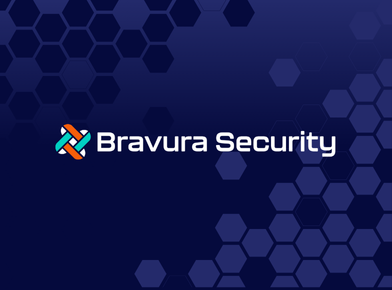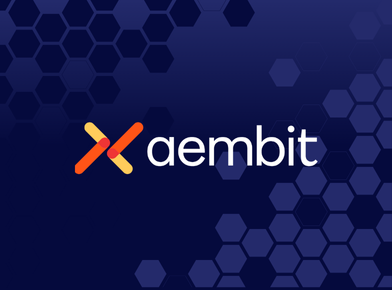Securing your organization’s IT infrastructure starts with minimizing the risk of unauthorized access to your sensitive data and applications. Too many data breaches can be traced directly to an organization not having sufficient control over access and permissions. Even organizations that can show compliance with industry-specific standards and regulations frequently do not have enough insight into who has access to what data and applications, why users have specific access rights, and what happens to users’ rights when their roles change. Organizations fail to correct these problems because solving them oftentimes requires resource-intensive development efforts and slows down critical business processes, which ultimately gets in the way of innovation and time to market for new initiatives.
Omada’s State of Identity Governance 2024 report shows that unnecessary access to systems and applications and overly permissive accounts are widespread concerns. Seventy-two percent of IT professionals and business leaders think people in their organizations have access to systems and applications to which they don’t need access and/or have overly permissive accounts that cause unnecessary risk. When users have access to systems and applications to which they no longer need access or have access that is excessive for their role, the level of impact on identity for these users is unnecessarily higher than it would be if their access were properly managed. To overcome this challenge, organizations must implement strong controls and identity governance and administration processes and ensure that only those who need access to applications and data have it. These controls must also ensure that access is de-provisioned when it is no longer needed.
An IGA solution that may have been effective in the past may not be today. It is always a good time to see where the gaps are in your organization’s IGA system and take steps to close them. Answer these questions to evaluate where you are at with your current approach.
- Is your IGA solution still providing the functionality required to secure identities and ensure appropriate levels of access to data and applications?
The State of Identity Governance: 2024 reports that organizations using legacy or in-house-built IGA reported significantly greater concern about identity-related threats. As your IGA solution ages the more costly it is to maintain, and TCO increases over time. This cost increase is largely due to the number of customizations that organizations must build to meet new requirements and the difficulty of maintaining a legacy system. Software and security patches, ongoing development support for integration with new systems, and the work necessary to absorb new workflows all contribute to these costs. What can you do to break away from your legacy system and reduce costs while improving identity and access control processes?
- Does your IGA solution sufficiently manage permissions and access to systems and applications?
Unnecessary access to sensitive assets leads to data breaches, compromised user accounts, and hackers gaining unauthorized access and moving around your IT infrastructure undetected. Strong identity verification, quickly identifying and suspending suspect accounts, and producing reports that show compliance only work to mitigate identity-related risks if an organization knows that every user has the right access to do their jobs. Does your IGA solution manage identity lifecycles, access requests, provisioning, changing roles and policies, and security breach response in real-time?
- Does your IGA solution foster zero-trust security?
Most organizations have more identities working remotely and legacy IGA solutions frequently struggle to manage these identities effectively. Your IGA tools must be able to stop unnecessary access to systems and remove excessive permissions from accounts automatically. To ensure meaningful identity and access management, your organization deployed a best practices process framework. If your IGA solution is not up for the challenge, you should evaluate modern IGA solutions with best practices frameworks and build a migration plan.
- Can your IGA solution demonstrate compliance with access management requirements?
As your organization onboards new identities and applications and business processes become more complex, it is essential to deploy an accurate compliance management system as part of your IGA solution. IGA solutions ensure compliance with access management requirements by enforcing access policies, automating provisioning and de-provisioning based on roles, and conducting regular access reviews. They provide detailed audit trails and reports for transparency, perform a risk analysis to identify and mitigate high-risk access, and manage the entire identity lifecycle from onboarding to offboarding. With features like self-service portals for access requests and automated approval workflows, IGA solutions maintain comprehensive and up-to-date identity data through integration with other systems, ultimately supporting regulatory compliance and organizational security.
- Is a best-of-breed IGA solution better for your organization than an IAM platform that offers IGA?
Many organizations believe that a best-of-breed IGA solution offering superior functionality is a better option than a single platform offering many IAM solutions. At first glance, “one-stop shopping” can seem less costly but there are downsides. A single IAM platform ties your organization to one vendor and makes it difficult and expensive to change. It can also be difficult and costly to add outside systems. In the end, a single platform may compel your organization to live with inferior IGA technology that is part of the platform that can increase identity-related risks. IGA does allow for compromise and choosing the best solution should not start with free and included in the IAM platform purchased.
- Is your IGA solution adaptable enough?
Choosing a robust and effective IGA solution is important, but you must also ensure that it can easily integrate with other systems to meet your organization’s specific requirements. When evaluating a new solution, most business leaders and IT professionals look for a connectivity framework that enables their organization to apply real-time identity governance to their assets without costly customization.
As you address these questions, you will get a better understanding of where your gaps are and take steps to secure identities and assets in a way that makes your IGA solution the backbone of your cybersecurity strategy.To learn more about Identity Governance drivers and the solutions offered by Omada, please visit their website.
About the Author: Steve Lowing is VP Marketing at Omada where he drives messaging strategy and full-funnel content development along with PR, AR and Brand Awareness. Before Omada, Steve held marketing leadership roles managing teams at Imperva driving its Application and Network Security product portfolio, at Threat Stack driving growth for its cloud security posture management solution, and at CyberArk leading product GTM for their endpoint and cloud identity security products. Prior to CyberArk, Steve launched Promisec into the EDR market growing SaaS revenues from zero to over $15M ARR before acquisition. Steve has a Bachelor of Science in Computer Science and lives in the suburbs south of Boston, MA, USA with his wife and two kids.
About the Member: Omada, a global market leader in Identity Governance and Administration (IGA), offers a full-featured, cloud native IGA solution that enables organizations to achieve compliance, reduce risk, and maximize efficiency. To ensure successful deployment in 12 weeks, Omada’s Accelerator package provides a reliable starting point for IGA projects with a standardized implementation approach, best-practice framework for process design, and training for efficient user adoption. Founded in 2000, Omada delivers innovative identity management to complex hybrid enterprise environments globally.







